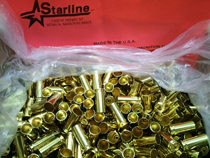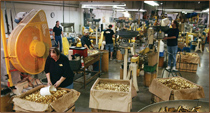
So you think you want to learn how to reload some ammo? Maybe you just purchased your first centerfire weapon and you want to save some money on practice ammo? Maybe you want to create some customized loads that the ammo factories don’t offer? Maybe you want to fine-tune your loads to give you more success on the range or in the field? Maybe you need to reload out of necessity because you own firearms with rare chambering? Maybe you are looking for a great new hobby? There are lots of reasons to reload, but today, most people start reloading for one major reason – you can save money.

Whatever your objective is, we want to help you figure out if reloading is right for you; then, determine the best way to get started. Reloading is simple really. All it takes is patience and attention to detail, because safety is job number one. Let’s get started:
What do I need to get started? Research is always important before diving into a hobby like reloading. The first thing to buy is the book - The ABC’s of Reloading by Dean Grennell. If you are less into reading and more into watching, another recommended place to start is watching Sierra’s Beginning Handgun Reloading and Beginning Rifle Reloading DVD’s. The DVD’s are available on Sierra’s website – Sierrabullets.com
Before we describe the ammo reloading equipment necessary to begin the hobby of reloading, let’s talk about the end product – ammunition. The anatomy of ammunition is broken down into four parts – the primer, the powder, the cartridge case and the projectile or bullet (each of these components is described in more detail on Starline’s Anatomy of Ammo page on our website). Reloading is the process of combining these four components to make the finished, loaded ammunition.
The ammo reloading equipment you purchase will be dictated by your budget, the quantity of ammunition you plan to produce, and how much time you are willing to spend reloading.
The basic piece of equipment for hand loading is the press. A press is a device that uses compound leverage to push the cases into the dies that perform the loading operations. Presses vary from simple, inexpensive single stage models, to complex progressive models that will eject a loaded cartridge with each pull of a lever, at rates of 10 rounds a minute.
Beginning reloaders should start with either a single stage press or a turret press. A popular single stage press is the Hornady Lock-N-Load Classic press (Hornady #085001). This press actually uses bushings to hold your dies in place. You can set the die in the bushing once, then remove the entire unit when changing dies without losing their setting. This is especially handy when loading small batches or when you reload for many different calibers. Another popular press is the RCBS Rockchucker (RCBS #9356). This is a very well built press and is generally the standard by which all other single stage presses are judged. Hornady even makes a conversion for the Rockchucker to utilize their Lock-N-Load bushings (Hornady #044095). If you are on a budget or you only plan to reload a few hundred rounds a year, you will be able to get by with a press that’s as affordable as the Lee Reloader Press (Lee #90045). This is a good beginner press that will come in handy many times, even if you upgrade to a more expensive press at a latter time. Lee reloading dies come with the shell holder required for the cartridge and with a powder dipper to measure powder by volume. With this press and dies, you can be up and reloading for under $60.
Turret presses also offer many advantages. Turret presses should not be confused with progressive presses in that they only have one shell holder on the ram and the dies are located in a turret above that ram. The turret indexes the desired die over the ram. You can use the turret press by loading one cartridge at a time and indexing the turret to the next stage without having to remove the case. Or, you can run every case through a single die, index the turret to the next die and run every case through that die. Most turret presses will have 5 or 7 die locations. Since most handgun die sets use three dies and most rifle die sets use two dies, you can leave 2-3 different sets of dies set up in your turret press without having to change anything but the shell holder, when changing calibers. Popular turret presses are the Redding T-7 (Redding #67000) and the RCBS Turret Press (RCBS #88901). You can expect to pay almost twice the price of a single stage press for a turret press.
Progressive presses use a shell plate which holds several cases on the ram, and the dies are located in a stationary position. The shell plate is indexed to locate the case to the desired stage in the reloading process. Every stroke of the handle will produce a finished round with a progressive press but they are more difficult to learn and more expensive. The toolheads are removable in many progressive presses which makes changing calibers easier. A progressive press for a beginner would only be recommended if you were going to do a high volume of reloading. A good press for this is the Dillon RL550B (Dillon #14261). Just like any hobby, you can continue to upgrade your ammo reloading equipment and eventually step up to machines like the Dillon 650 and the Dillon 1050. These presses can be set up with automatic bullet feed and automatic case feeders that make reloading as simple as just pulling a handle.
Almost all reloading presses use a 7/8”-14 thread for the dies so any brand of dies can be used in any press. Some popular brands of dies are Hornady, Redding, RCBS, Lyman and Lee. For handgun cartridges, be sure and purchase a die set with a carbide sizing die or a TiN coated sizing die or you will be required to use case lube for sizing. For most rifle calibers, you will only be able to get steel dies, but it is worth the investment to get a neck sizing die in addition to the standard full length die set. A separate crimp die is also a good investment for handgun cartridges and rifle cartridges that require a crimp. Some die sets such as the Lee will come with the shell holder required for use with that caliber but most of the time you will have to buy this separately (many times one shell holder will work with several calibers).
While most single stage and turret presses include a priming attachment, some reloaders prefer using handheld priming tools. The handheld priming tools give you a better “feel” when priming and are generally faster to use than the priming attachments on the press. Some brands recommended are the Lee AutoPrime (Lee #90230), which requires its own shell holders, and the RCBS Universal Hand Priming Tool (RCBS #90201), which requires no shell holders at all.
Unless you are using the Lee Powder Dippers, you will need to purchase a powder measure and a scale. Brands preferred are the Hornady Lock-N-Load Powder Measure (Hornady #050069) or the RCBS Uniflow Powder Measure (RCBS #09010). A quality set of balance beam scales will serve you well but many reloaders prefer to use an electronic scale such as the Hornady Lock-N-Load Bench Scale (Hornady #050108) or the MTM Mini Digital Reloading Scale (MTM #DS750).
A good set of dial or digital calipers is a must for reloading so you can measure case length and cartridge length while loading. You will also need a vibratory case tumbler such as the Berry’s MFG 400 Vibratory Brass Cleaner (Barry’s #65555) and polishing media. A walnut media, such as Barry’s Walnut Coarse 14/30 Grit (Barry’s #75221), is popular. You will also need a case lube such as Hornady One Shot (Hornady #9991) and a Chambering tool, such as the Hornady Chamber Debur tool (Hornady #050017). A case trimmer is not really necessary for reloading handgun brass but may be necessary for rifle brass.
Most manufacturers sell ammo reloading equipment starter kits that include everything you’ll need, or almost everything required to start reloading. One is the Hornady Lock-N-Load Classic Kit Deluxe (Hornady #085010). You could pick this kit up for around $320. For someone on a smaller budget, the Lee Breechlock Challenger Kit (Lee #90030) can be picked up for about $120.
A good reloading manual is a must, and the more you own, the better. Bullet manufacturers provide load data specific to their bullets, while powder manufacturers give you load data specific to their powders. Using both is popular, which allows you to compare the two if possible. Powder manufacturers generally pressure test their loads so you will have a very good idea how hot a load actually is. Bullet manufacturers generally shoot their loads for accuracy and will often have ballistic charts to go with the data. It is also worth noting that a manufacturer’s latest data makes all previous data obsolete. Always be sure to have the most current data available in case the manufacturer has found a reason to change their data.

There you have it; everything you need to know to start reloading. Well, maybe we didn’t cover everything, but now you should be pointed in the right direction to begin your new reloading hobby. But, you are not beginning this journey alone. All the manufacturers mentioned here have technical support resources to answer any question you may have as you get started. The social networks are also filled with dozens of blogs, YouTube videos and Facebook and Twitter posts that cover all aspects of reloading. The most important thing to do is dive in, and you’ve made the best first step by coming to the Starline Brass site – because a great Shot (and a great reloading experience) starts with Starline.